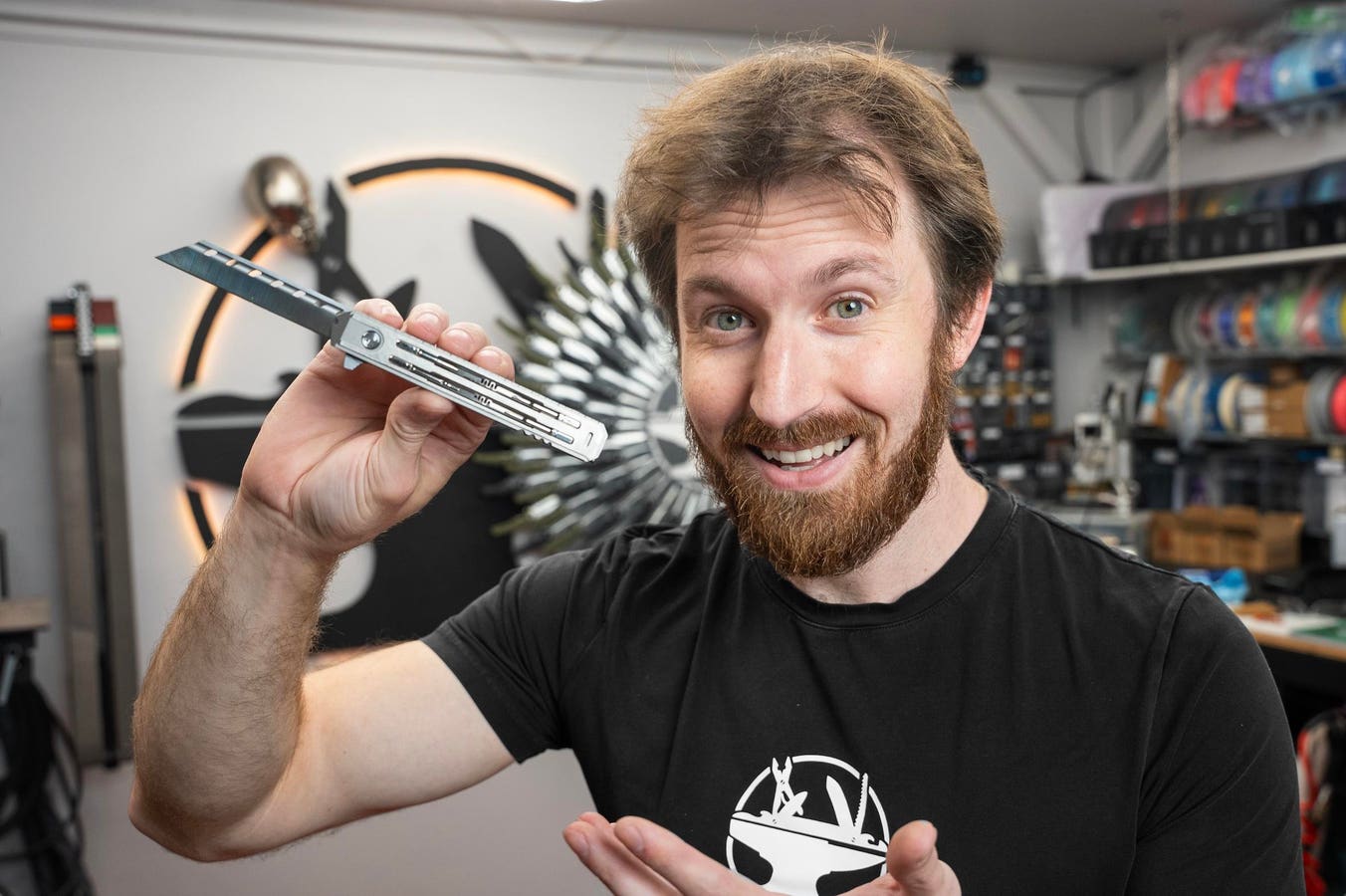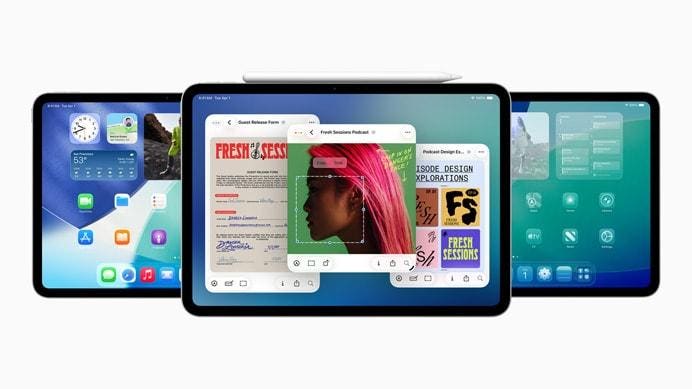James Hobson and the Smith Blade
Hacksmith
Hacksmith Industries may have started with sci-fi experiments and YouTube stunts, but its latest project is pure business. Co-founded by James Hobson and Ian Hillier, the team has just raised more than $7.4 million on Kickstarter for their flagship product: a futuristic multi-tool designed entirely in-house. With 25,000 units pre-ordered and counting, and two weeks left on the campaign, it’s a case study in how content can power commerce.
“It’s crazy, totally surreal. We had big hopes for this project, but it’s kind of blown that out of the water,” Hillier told me. “It’s both a windfall and a liability. I’ve got to make, as of today, like 25,000 knives. More every day. It is a great problem to have.”
A Creator-Driven Manufacturing Operation
Hacksmith’s transition from content to commerce isn’t an overnight pivot. It’s the product of a multi-year strategy rooted in engineering, storytelling and audience trust. Hillier, now COO, and Hobson aka the Hacksmith, the CEO and on-camera face, have grown their YouTube channel to millions of subscribers by building real-life versions of fictional tech: lightsabers, jetpacks, giant mechs, and electromagnetic Captain America shields. These projects were proof of concept for the engineering ethos behind their full-scale hardware product.
“We started this project a year and a half ago and we set out to make the best multi-tool we could,” said Hillier. “We invested a lot of money to get there. Probably about a million dollars. So what success looked like in my mind was: okay, I need to make that money back and then a little more on top of that. I was picturing… maybe around three [million Canadian]
. But now we’re at nine.”
Play Puzzles & Games on Forbes
Product-Market Fit, the Creator Way
So why did this launch work where so many creator-backed product launches flop?
“Same as a video,” Hillier explained. “If you release a good video, it’s going to perform well and the algorithm picks it up. In the case of a product, if you release a good product, then it should perform well. This is a fantastic product. It stands for itself.”
Hacksmith’s multi-tool wasn’t a drop-ship scheme or a white-labeled Alibaba item. In fact, Hillier is blunt about what doesn’t work: “If we had gone on Alibaba and just slapped our name on something, we wouldn’t be in the position we are now.” Instead, the team iterated for over a year and a half on the design, using the tool every day in their own workshop.
The result? A tool that resonated. “It’s something I carry on me every single day,” Hillier said. “It just resonates with our audience.”
That connection is evident in backer behavior. Though Hacksmith offered a tiered reward model with lower-cost versions of the tool, most buyers went straight for the top-tier version. “We expected more people to go for the cheaper version… And yet overwhelmingly people are choosing the Pro,” Hillier said. “Because it’s the best product. It’s the one I would personally buy.”
Manufacturing in Canada, Not China
Unlike many creators who license or outsource manufacturing, Hacksmith is building the product in-house in their 15,000 square foot facility in Cambridge, Ontario. That decision was strategic.
“We made the crazy decision to manufacture in-house,” Hillier said. “Part of that is tariffs, partially quality control… but I also think we sold more because we said we’re making it in-house. People want to support that journey.”
Of course, this comes with massive logistical challenges. “Each knife takes 2 hours of machining,” he noted. “You need to have like 30 machines or more running 24/7 to make that many knives.”
Escaping the YouTube Treadmill
The shift from video-driven revenue to product revenue is intentional. “We’ve kind of been a bit stuck on the YouTube treadmill,” Hillier said. “Okay, we need to release a video so we can have a sponsorship so we can pay the employees and the mortgage. We’d love to get out of that.”
He credits Linus Sebastian (of Linus Tech Tips) for early inspiration. “When we did a collab with Linus in 2020, he said: you have to start, and it takes time. But once you start, it’s a long burn… it’s worth it in the end.”
Their early attempts at monetization with t-shirts went nowhere. “We might advertise a t-shirt in a video and get like five or ten sales. Pathetic,” Hillier admitted. “Because apparel does not resonate with our audience. But now, even when we’re not releasing content, we’re getting decent sales because we have residual views and a back catalog of good products.”
Great Takeaways for Creators
His advice to creators thinking about launching a product?
1. Build Trust First: Hacksmith spent over a decade building trust with their audience. When they launched a product, it wasn’t a total surprise.
2. Design What You Use: They didn’t guess what the audience wanted. They built a product they used every day themselves.
3. Tell the Story: The story of how and why the product was made became just as important as the product itself.
4. Don’t Go Cheap: Competing on price is a losing game for creators. Instead, compete on quality, authenticity and community.
5. Think Long-Term: A good launch is just the beginning. Hacksmith is already planning recurring revenue from future products, accessories and expansions.
6. Be Transparent: Hillier doesn’t shy away from the complexity, cost, or time involved. That honesty builds credibility.
What’s Next
So what happens next? “The future of Hacksmith is more epic builds, more products,” Hillier said. “We want to work more for ourselves rather than for sponsors.”
His dream project? “A real, commercially viable lightsaber. Not sure how feasible that is, but… given unlimited budget and time, I’d say that’s possible.”
For now, Hacksmith is proof that when creators bring authenticity, engineering rigor and audience empathy to the table, they can build real companies.
“We’ve gotten to where we’ve gotten just purely organically,” Hillier reflected. “We haven’t spent anything on paid ads. So it’s been very humbling to get here. And we’ve got a lot of work to do.”
This article is based on an interview with Ian from my podcast, The Business of Creators.









